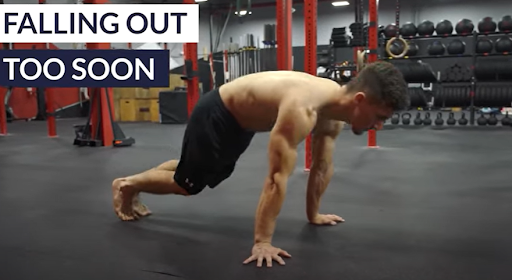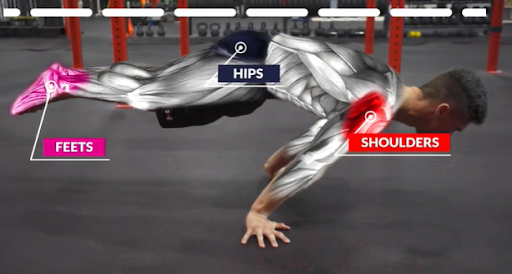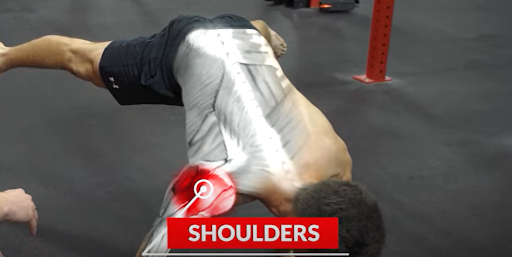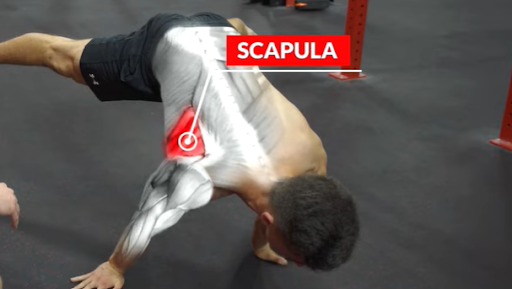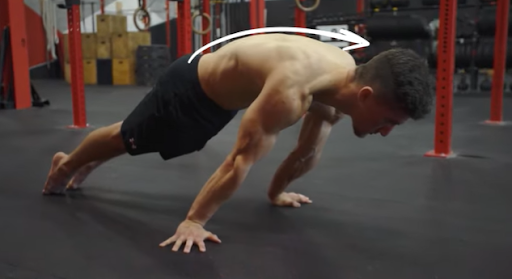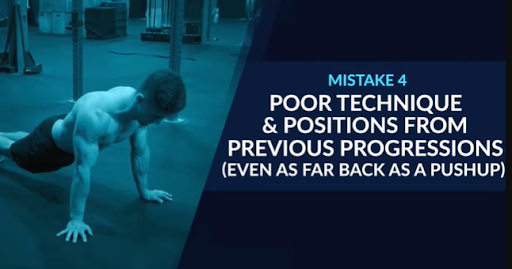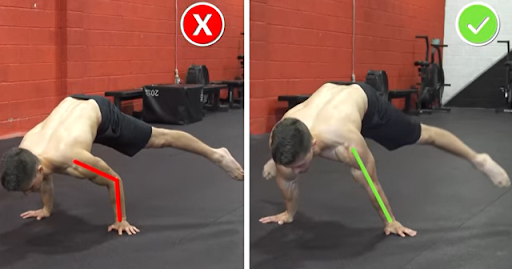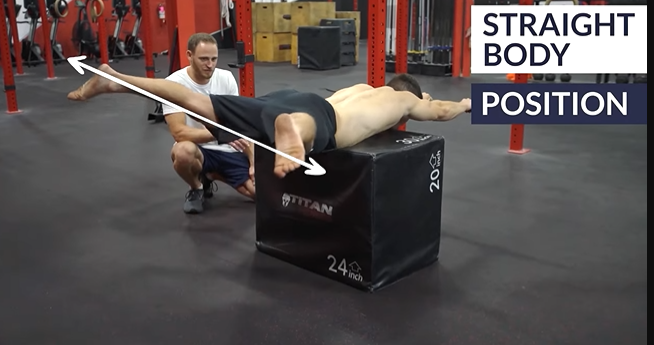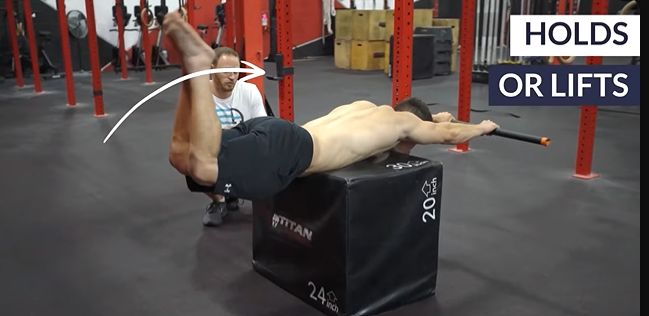Ever stood on the verge of conquering the mysterious planche, only to be haunted by the persistent doubt – are you nailing it or missing the mark?🥺
You are not alone. It’s a classic dilemma of every aspiring planche enthusiast. Even the most seasoned practitioners have grappled with the elusive planche, making mistakes. It’s all part of the journey.
The planche, a mesmerizing and formidable calisthenics maneuver, is a testament to strength and a challenge to one’s balance and precision.
It’s a dynamic and visually stunning exercise that beckons novice and seasoned fitness enthusiasts. However, unraveling the intricacies of the planche can be a frustrating journey, marked by persistent doubts about technique.
In this article, we will focus on common mistakes hindering planche’s progress, ultimately identifying and overcoming the worst mistakes to master this awe-inspiring calisthenics feat.
Let’s start!
😱What is a Planche?
Before delving into the potential mistakes in training the planche, let’s first gain an overview of what a planche is.
The planche is a highly advanced calisthenics maneuver that showcases an individual’s strength, balance, and control. It involves holding the body parallel to the ground while suspended on the hands, with the arms fully extended and supporting the entire body weight. The primary muscle groups targeted during a planche include the shoulders, chest, and core.
There are various progressions and forms of the planche, ranging from the tuck planche, where the body is tucked in a compact position, to the full planche, where the body is fully extended and parallel to the ground. Achieving a planche requires upper body strength, core stability, and flexibility.
🔥Importance of Proper Form in Achieving Planche Perfection
Achieving perfection in the planche is a testament to one’s physical prowess and a demonstration of the importance of proper form in mastering such complex movements.
Proper form in the planche is crucial for several reasons:
- ✅Ensures the effective engagement of the targeted muscle groups
The planche primarily targets the shoulders, chest, and core muscles, and maintaining proper form allows for the optimal activation of these muscle groups. This not only enhances the efficiency of the exercise but also minimizes the risk of injury by distributing the load evenly across the body.
- ✅Essential for achieving and sustaining balance
The body must be aligned correctly to counteract the force of gravity and maintain a horizontal position parallel to the ground. Any deviation from the proper form can disrupt the delicate balance required for the planche, making it more challenging to hold the position.
- ✅Promotes muscle endurance and strength development
The isometric nature of the planche requires muscles to contract and remain active for an extended period. By adhering to proper form, individuals engage their muscles most efficiently, leading to gradual strength gains and improved endurance over time.
Moreover, achieving planche perfection demands a progressive and structured approach. Individuals need to gradually build up the strength and flexibility required for the planche, and maintaining proper form throughout the progression is crucial. Deviations from proper form may lead to compensatory movements, hindering progress and potentially causing strain or injury.
😢6 Worst Planche Mistakes and How to Correct Them
Frustration may occur after months or years of training, but the challenge typically stems from underlying weaknesses or incorrect techniques. It’s essential to pinpoint specific areas of weakness, whether it’s insufficient core strength, inadequate shoulder stability, or a lack of precise body positioning.
Identifying and addressing these factors through targeted training and technique refinement will pave the way for conquering the elusive planche. By understanding these missteps and their solutions, you’ll be better equipped to refine your technique and elevate your calisthenics prowess.
👎Mistake #1: Not Spending Enough Time Under Tension
One of the primary stumbling blocks in planche training is the tendency not to spend sufficient time under tension in the desired position. Let’s look at this mistake and discover how to fix it.
The error manifests in various ways. You might hastily jump into the planche, only to fall out quickly. It’s a scenario where the body doesn’t linger long enough in the intended position.
Whether it’s a failure to lean forward adequately, a struggle to find the right balance point, or simply rushing through progressions, the result is the same: insufficient time under tension.
✊The Underlying Factors
There are a couple of potential culprits. It could be the eagerness to progress too quickly, attempting advanced variations without mastering the basics first. Alternatively, it might be a lack of awareness regarding the proper training approach for the planche.
✊Corrective Measures
Extend the duration of your planche attempts. Whether it’s the full planche or preceding progressions like a plank, commit to holding these positions for extended periods. This simple tweak ensures that your muscles are subjected to a sustained stimulus, laying the foundation for strength gains.
Consider dedicating time to preceding progressions. Whether it’s a plank or an intermediate step, the key is to prolong the time your muscles spend under tension. This not only enhances strength gains but also refines your form and technique.
👎Mistake #2: Hand Placement Dilemmas
Another prevalent mistake centers around hand placement. While personal preferences play a role, the critical choice between having the hands facing forward or to the side can significantly impact your progress.
When executing a planche with hands facing forwards, instead of turning them to the side, the engagement of different muscle groups comes into play. Let’s break down the mechanics to understand this mistake better.
✊The Science of Hand Placement
If the hands are turned to the side, the shoulders undergo external rotation, which engages the lats more effectively. This subtle adjustment activates additional upper body muscles, effectively distributing the load and making the planche more manageable.
✊Corrective Measures
To address this common fault, consider turning your hands slightly out to the side during a planche. This action introduces torque into the floor, prompting the upper body muscles to engage. By making this nuanced adjustment, you enhance your ability to spread the load and improve your planche performance.
👎Mistake #3: Retracted Shoulders in Planche Training
A common mistake in planche training involves retracted shoulders, a position where the scapula pinches together in a less-than-ideal manner. This position is undesirable for achieving optimal form and performance in the planche.
Contrastingly, aim for scapular protraction, where the shoulders move away from each other. This adjustment contributes to better alignment and engagement of the upper body muscles during the planche.
✊Corrective Measures
To address retracted shoulders, the solution is to revert to fundamental exercises, such as the plank. By revisiting simpler movements, focus on understanding how to engage the shoulder muscles and push effectively.
This foundational awareness will aid in training the planche with the correct shoulder positioning and mitigate the occurrence of retracted shoulders.
👎Mistake #4: Poor Positioning from Previous Progressions
A prevalent mistake hindering planche progress is maintaining poor positioning from earlier progressions. Whether executing a straight planche or regressing to a straddle or tuck, the error compounds if positional flaws go unaddressed.
Failure to correct these misalignments allows them to persist and adversely affect subsequent stages of the planche.
Mistakes in previous planche progressions, particularly in push-ups, are common and can impact overall technique.
- Head Positioning: Avoid a downward-ducked head during push-ups, as it may carry over into advanced progressions like the strut-up planche.
- Shoulder Awareness: Be mindful of shoulder positioning; retracted shoulders can impact overall technique and progression.
- Core and Lower Back: Check for a sagging arch in the lower back and core, even if shoulders seem fine, as this lack of awareness can persist through progressions.
- Lockout in Push-ups: Ensure complete lockout during push-ups to maintain the entire range of motion and enhance overall exercise effectiveness.
✊Corrective Measures
To address this mistake, consider revisiting earlier progressions such as straddle or tuck positions or even going back to a straight arm plank on the floor with push-ups. By identifying and rectifying positional errors in these foundational exercises, you establish a stronger foundation for the planche.
👎Mistake #5:Training with Bent Arms
A prevalent and detrimental mistake in planche training is the inclination towards performing the exercise with bent arms. This common fault involves the failure to fully extend the arms, compromising the integrity of the planche position.
Instead of maintaining a locked position, the arms exhibit a noticeable bend. While the planche may seem decent, the compromised arm position significantly deviates from the ideal form.
Many individuals fall into the trap of bent arms because it might feel like a shortcut to achieving the planche sooner. The perceived strength advantage in this bent arm position becomes a hindrance as it persists through progressions such as tucks and straddles.
✊Corrective Measures
To rectify this common mistake, focus on strengthening the triceps and spending more time in the locked arm position during earlier progressions. This not only corrects the immediate issue but also ensures that the correct form is ingrained and carried forward to advanced stages of planche training.
If the tendency for bent arms is ignored initially, it becomes a persistent flaw that hinders progress. Consistent effort, focusing on the lock arm position, and meticulous attention to form ensure this mistake doesn’t impede your journey to a flawless planche.
👎Mistake #6: Neglecting the Core in Planche Training
One common mistake in planche training is overlooking the core, particularly the lower back and glutes. Many individuals get so focused on training the shoulders and upper body that they neglect the lower half, which is a significant fault.
Integrating core training into your planche routine is crucial for achieving comprehensive strength and stability.
✊Corrective Measures
To correct this, try these simple exercises focusing on your lower back and glutes. One effective exercise involves lying on an elevated surface, such as a bench or box. Without the need to hold a bar, you can mimic lower body progressions of a planche, like raising into a straddle or straight body position.
This exercise emphasizes engaging the back and glutes, addressing aspects often overlooked in planche training.
Check out this YouTube video on the 6 WORST planche mistakes and how to fix them:
🧐Frequently Asked Questions
🔎Why is it crucial to address mistakes early in planche training?
Early correction of mistakes is essential for building a solid foundation, preventing bad habits, and optimizing strength gains and aesthetics in the planche.
🔎Are there specific exercises to correct common planche mistakes?
Yes, exercises targeting the lower back, glutes, and core and revisiting earlier progressions can help correct common planche mistakes.
🔎How can I avoid a sagging lower back and core during planche progressions?
Maintain awareness of core engagement, ensuring that the lower back remains straight and the core stays tight throughout planche progressions.
🔎Why is it essential to maintain a full range of motion, including lockout, in push-ups for planche training?
A complete lockout ensures the entire range of motion is covered, optimizing the effectiveness of push-ups and contributing to better overall planche training.
🔎What is the significance of recognizing poor technique in earlier planche progressions?
Recognizing and addressing poor technique early on prevents the reinforcement of bad habits, setting the stage for successful planche training.
🔎Can I still progress in planche training if I’ve made mistakes in previous progressions?
Yes, with focused correction and attention to detail, progress is possible. Revisit and fix mistakes, ensuring a solid foundation for continued advancement in planche training.
🔎Can I progress in planche training without prior experience in advanced calisthenics?
Yes, but it’s crucial to start with foundational exercises, gradually progressing through various stages. Rushing into advanced progressions without a solid base increases the risk of mistakes.
💥Conclusion
In our dive into common planche mistakes, it’s crucial to recognize that success in mastering this advanced skill hinges on the virtues of patience and precision. Elevate your planche game by embracing a more extended time under tension; let your muscles adapt and grow stronger.
Pay meticulous attention to hand placement, ensuring optimal stability in each progression. Keep those shoulders actively engaged, refining the nuances of your form with each practice session.
☝️Remember, the devil is in the details: perfect your technique, ensuring each movement is a deliberate step towards perfection. Straightening those arms becomes a physical and mental task, fostering the discipline required for planche excellence. And never underestimate the power of a strong core—the foundation upon which your planche prowess is built.
So, as you progress, keep pushing your boundaries, relish the grind of practice, and find joy in witnessing the evolution of your planche skills. Your journey is an ongoing refinement process—a symphony of dedication, technique, and resilience.
Keep pushing, keep practicing, and enjoy the evolution of your planche prowess!
Take the first step towards unlocking your planche potential with The Movement Athlete.💪 It offers a lifelong, progressive, and effective bodyweight strength training program. 📌Take the Assessment now and receive a comprehensive, customized training plan with suggestions and exercises ready for immediate use!


